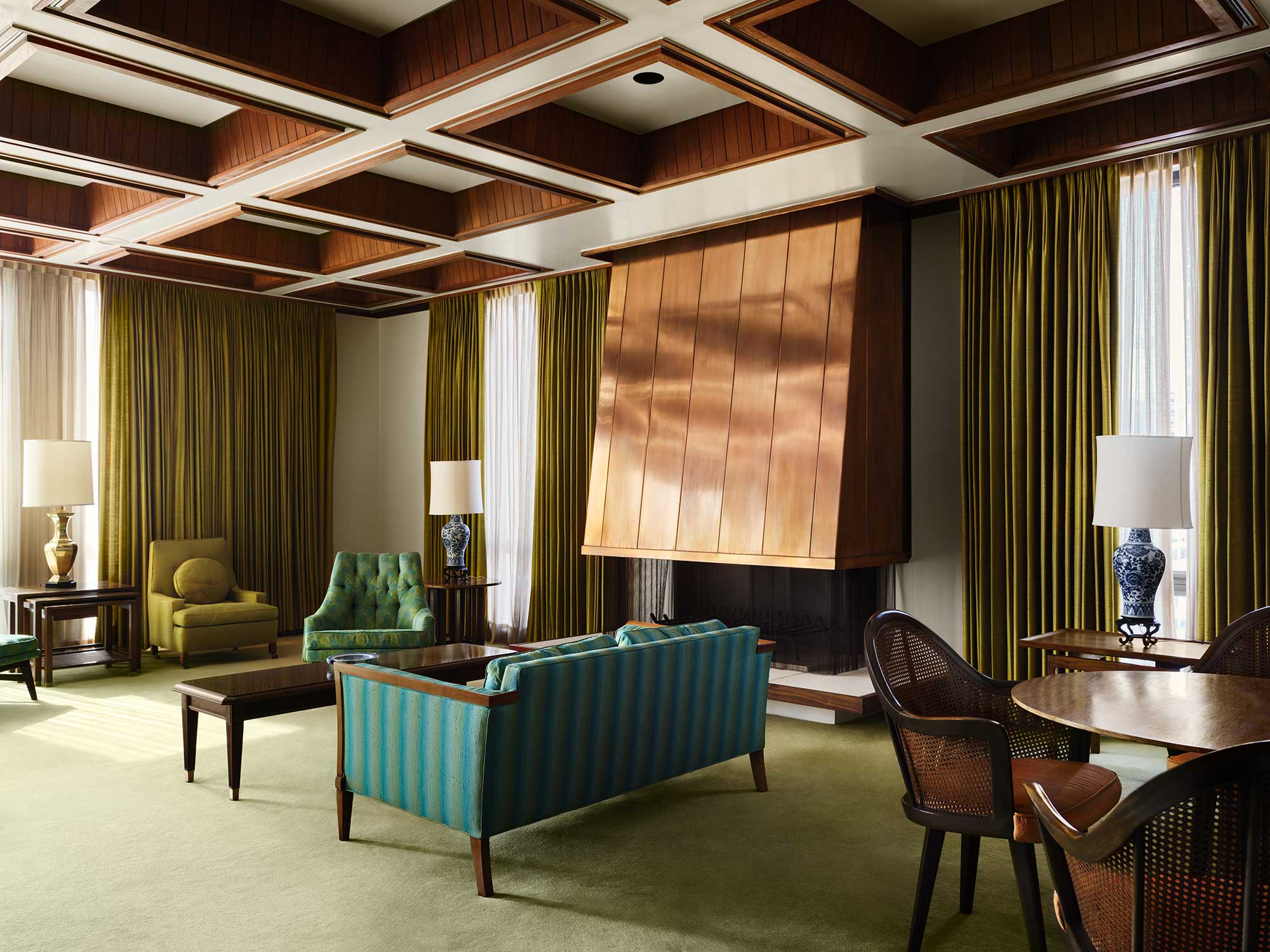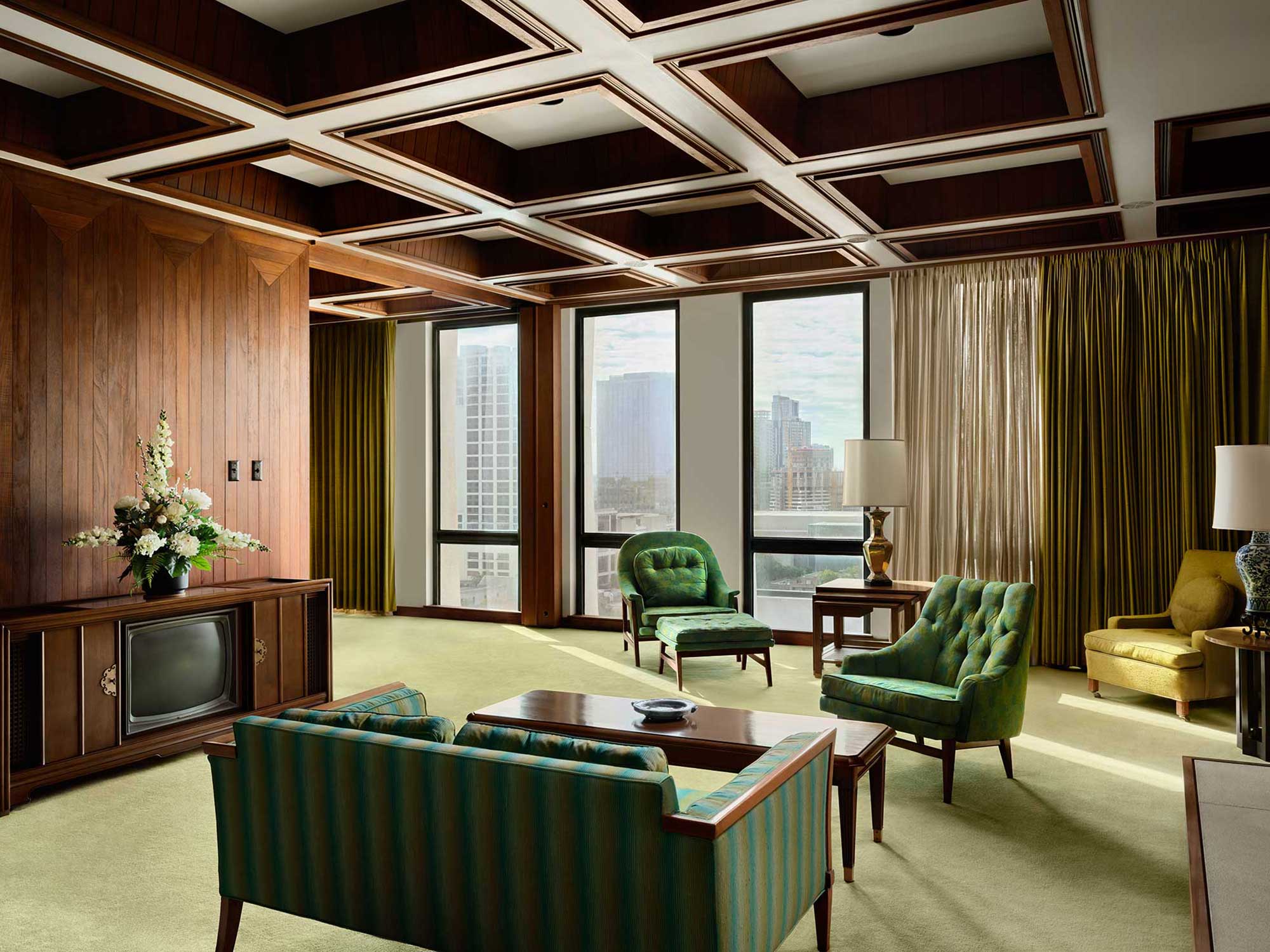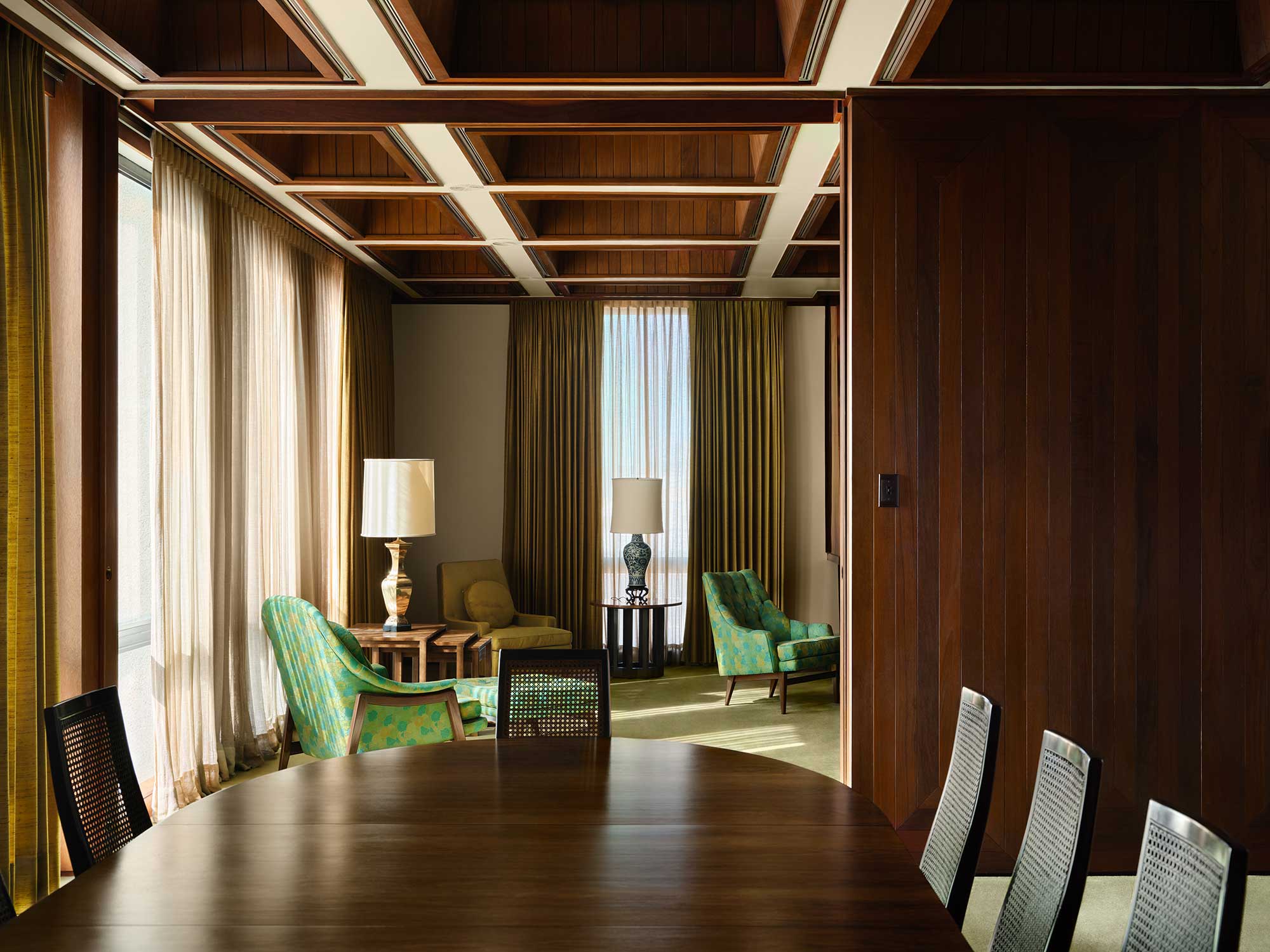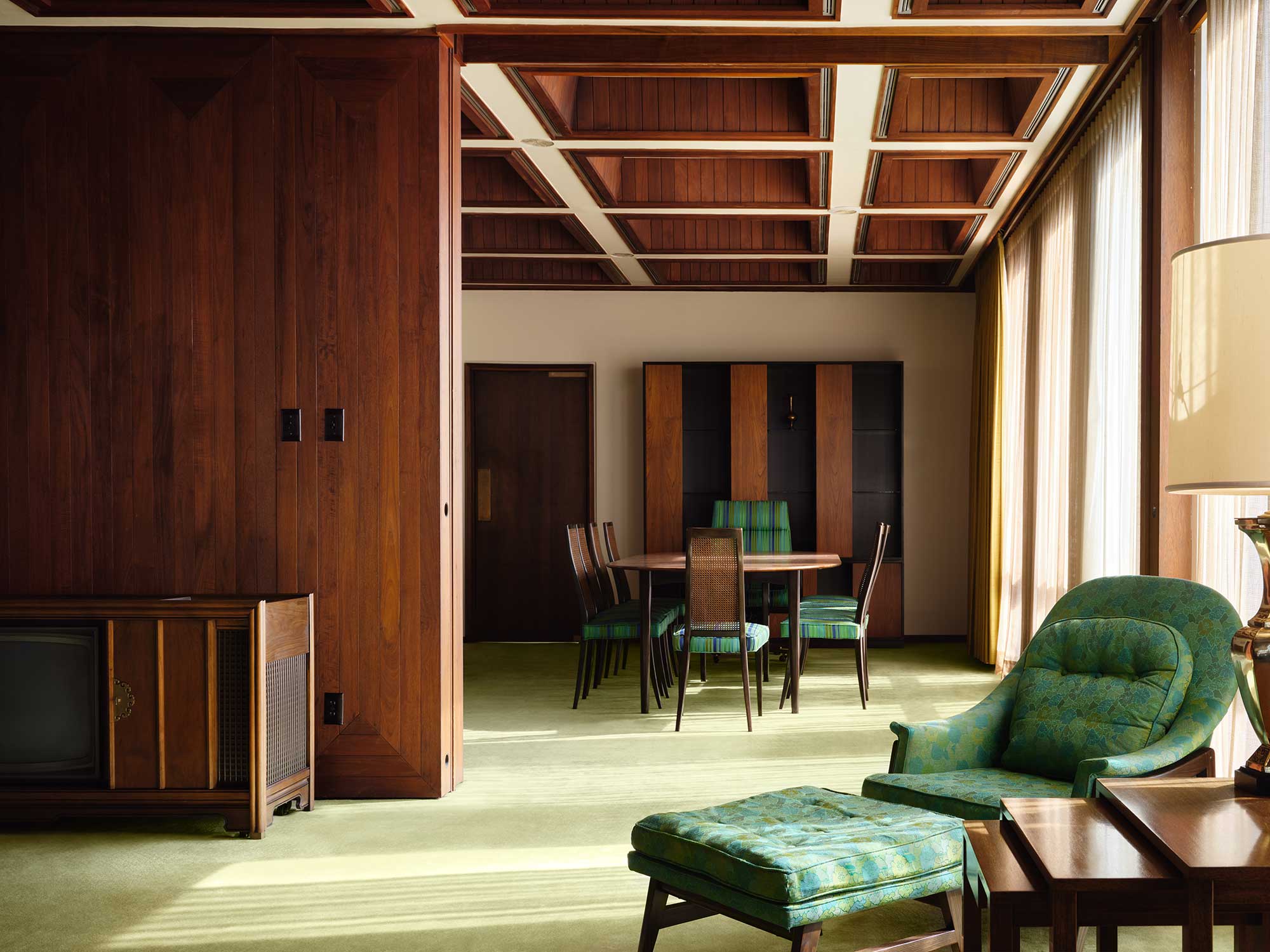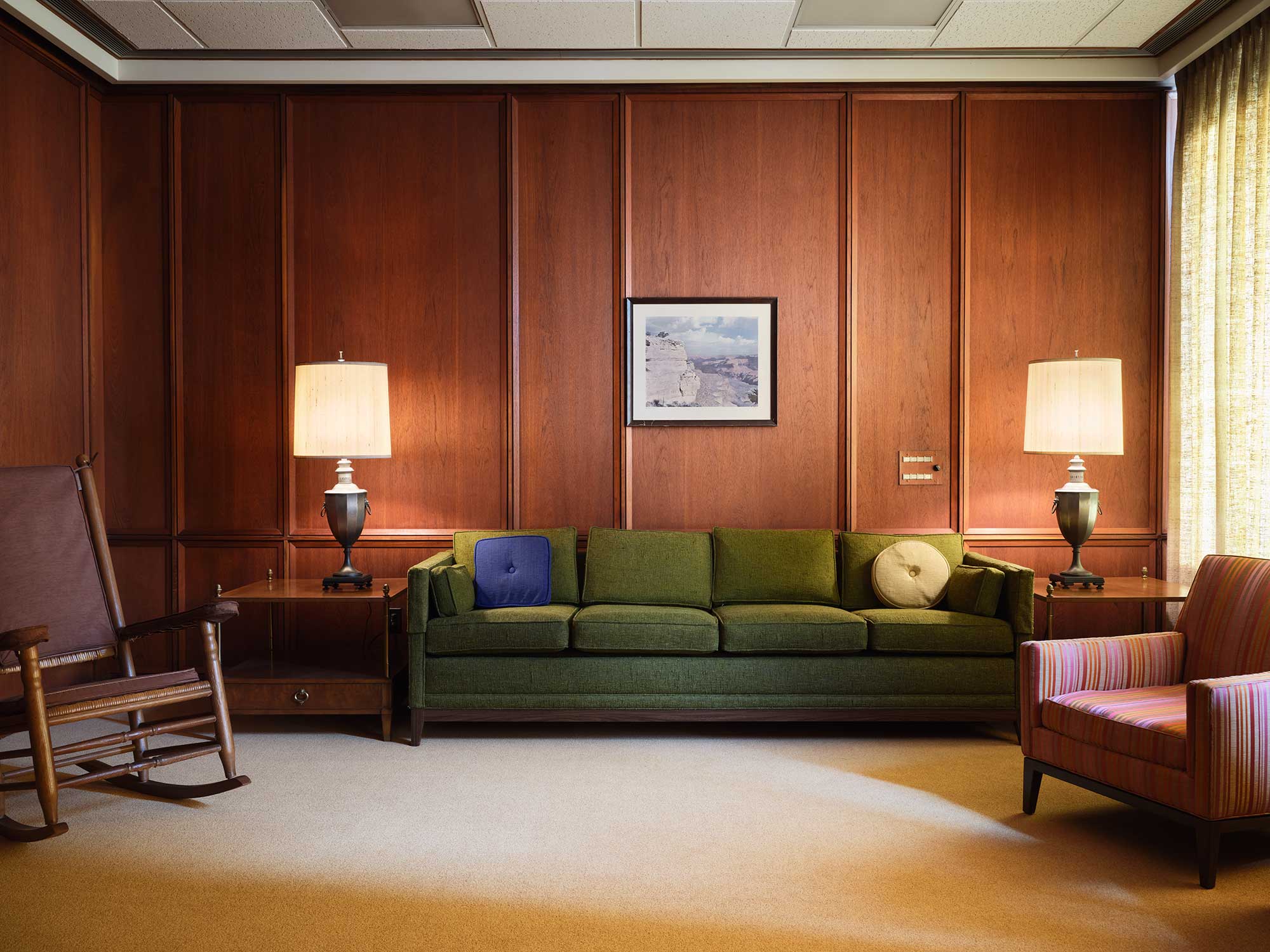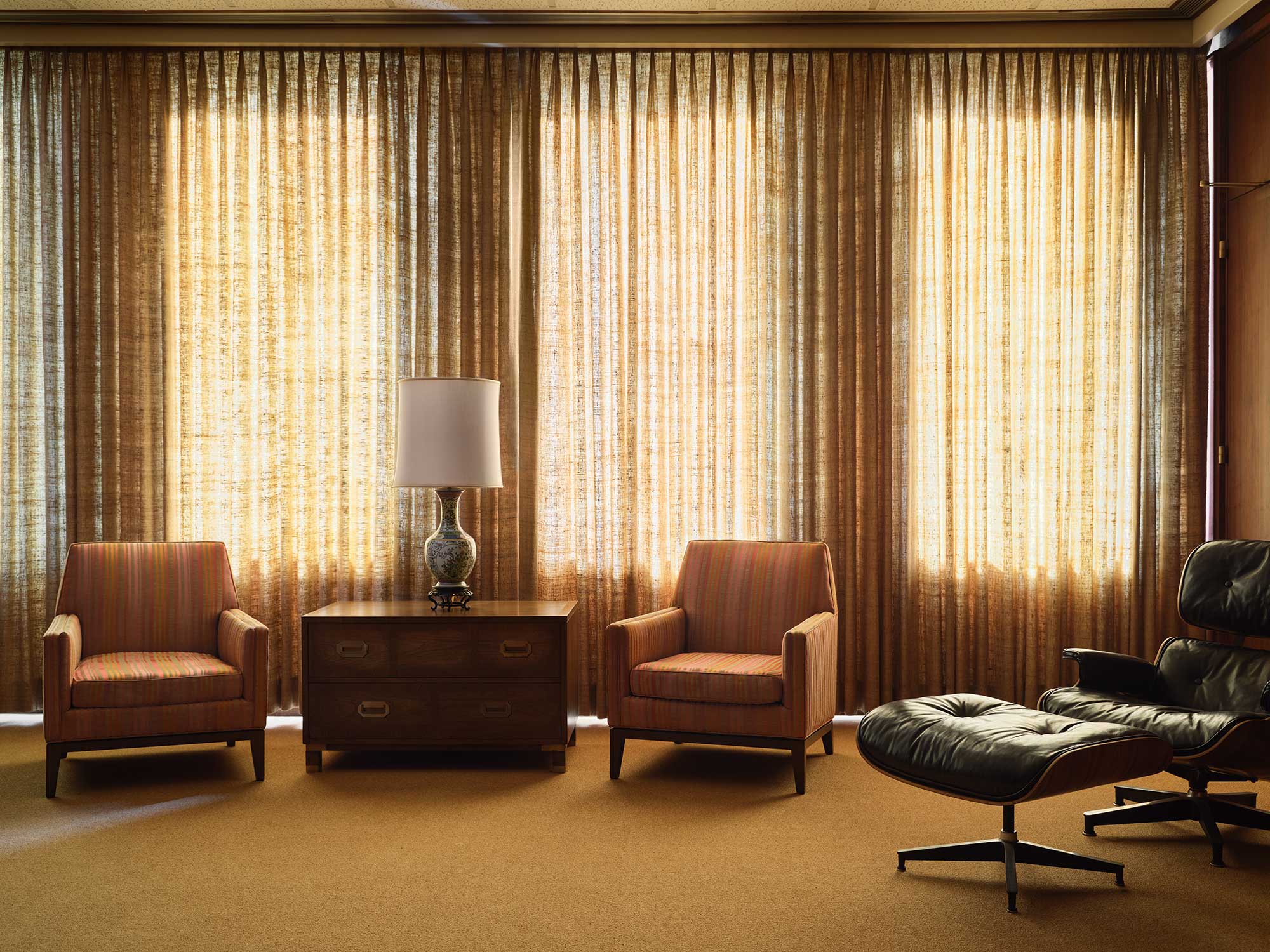Conservation of LBJ Suite Furnishings at J.J. Pickle Federal Building
Everyday items such as table lamps and armchairs do not typically draw much attention. But those used by an American president serve as a backdrop to innumerable scenes in which private conversations and pivotal moments in U.S. history played out.
Cushing Terrell worked with the General Services Administration (GSA) — which is responsible for preserving and maintaining government-owned cultural properties — on the conservation of historically significant furnishings associated with the former presidential suite of President Lyndon Baines Johnson (LBJ) in the J.J. Pickle Federal Building in Austin, Texas.
Our work was completed in two phases. In the initial phase, the base scope was to provide a condition assessment report with treatment recommendations for the LBJ Suite furnishings. This included reconciling an inventory of the items remaining in the suite. The assessment included treatment recommendations to achieve conservation of the furnishings in the next phase of the project.
Once the assessment phase was completed, Cushing Terrell oversaw Studio Six Art Conservation’s stabilization and rehabilitation of the LBJ Suite furnishings. Deliverables included photographic records of each item on the inventory, an updated inventory, and a detailed written narrative documenting the activities to conserve each article and recommendations for treatment, maintenance, and preservation.
Our Historic Preservation team reviewed and reconciled all historic images of the presidential suite and previously developed furniture layout plans from the 2013 report, and confirmed the proposed furnishing layout was accurate compared to documented photographs of the suite used by the former president. The development of a layout plan, included in the Final Conservation Report, provided building staff with instructions on the setting of the room so that furnishings can be returned to their historical use location when possible.
Working with the GSA, our team developed a detailed Fact Sheet for GSA use in explaining the suite to visitors and stakeholders. In support of the GSA’s intention to provide public information about the suite, Cushing Terrell designed signage for use in the lobby of the building to inform the public about the suite and direct them to digital media online, including video interviews conducted by the GSA to document completion of the work.
LOCATION
Austin, TX

